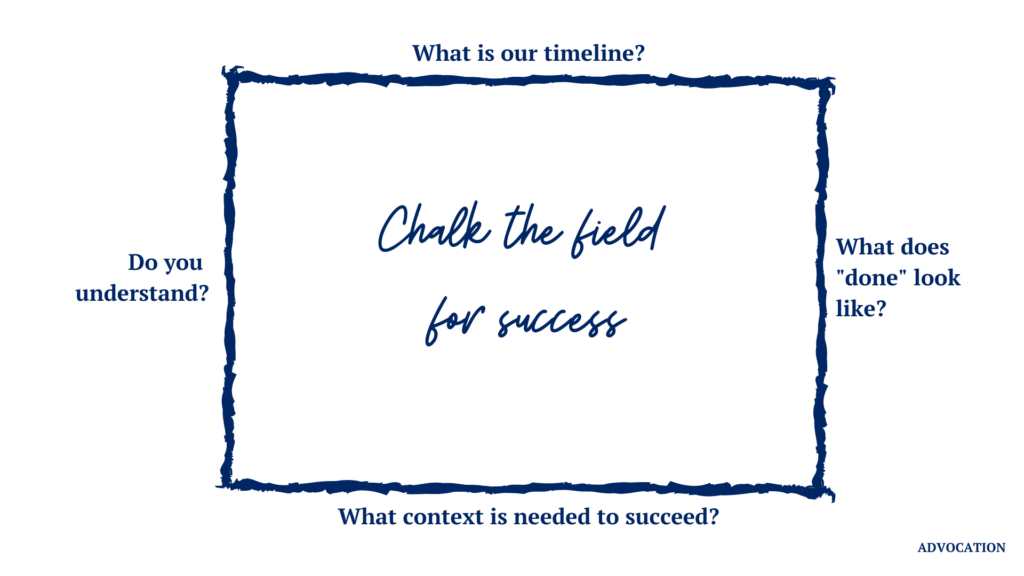Over the past year, my team and I have worked intimately with PR agencies to help them navigate the challenges that came with running a business during a global pandemic. It isn’t easy to find words that accurately summarize our collective experience, but every PR professional I’ve connected with has had something in common.
They chose resilience in the face of uncertainty.
Agencies helped their clients navigate countless crises. Owners and leaders worried about revenue losses and whether or not they’d be able to make payroll. Some agencies experienced layoffs or drastically reduced hours.
Now, seemingly overnight, it’s like a light switch flipped and the PR industry did a complete 180 in the other direction.
Instead of stressing about reduced budgets and canceled PR contracts, many agencies are experiencing the opposite. They have more business than they can handle.
Several of the PR agencies we work with have doubled their monthly revenue in the past quarter. Others have introduced new, lucrative service offerings and client verticals. However, no one can hire quickly enough to staff new PR clients and campaigns.
What's the issue?
Our current challenge is more in line with what the industry faced before the pandemic. In fact, in the past decade, employment in the PR industry grew by 40%, which brought an ongoing hiring dilemma for many agencies—an inability to staff quickly enough to keep up with client demands.
Our next hiring crunch will be even more complex than the last. Why? There are fewer professionals available for traditional full-time roles. That’s happened for a variety of reasons, including:
1️⃣ Nearly three million women were pushed out of the traditional workforce in 2020 due to the COVID-19 pandemic, and many found alternative forms of employment like consulting or starting their own business.
2️⃣ Even before the pandemic, industry leaders were bracing themselves for the Baby Boomer generation to retire. According to an Institute for Public Relations study, more than 60% of executives surveyed expected to retrain or replace a quarter of their workforce by 2023.
3️⃣ Incoming professionals are choosing freelancing as their desired career path, with more than 50% of Gen Z and 40% of Millennials participating in the gig economy (according to the Freelancing in America Survey).
So, what are agencies supposed to do and how can they effectively staff and onboard new PR clients not just now, but in the future, too?
The most significant opportunity lies in strategically leveraging the gig economy business model. Here’s how to leverage it.
How to effectively leverage the gig economy business model
As the PR industry continues to evolve, leveraging the gig economy business model provides a variety of opportunities for agencies to serve their clients, organizations, and larger team, including:
- Deepening your bench of talent, helping to kick off projects and campaigns quickly and effectively
- Testing and introducing new service offerings or client verticals
- Tapping into highly specialized experts to drastically increase results and your agency’s own reputation
- Improving team capacity, which dramatically impacts morale and employee retention
- Freeing up the bandwidth of agency owners and senior leaders so they can focus on the future of the firm
All of the above yields a stronger bottom line through reputation, revenue and results. However, achieving it all will require more than the typical freelancer or contractor relationship in which most agencies are familiar.
We’ve worked with numerous agencies to help them effectively hire and partner with freelancers, contractors, consulting firms, and white-label partners. Three factors make the biggest impact for building win-win-win partnerships for your agency, team members, and the clients you serve:
1. Develop and maintain effective systems and structures
One of the top challenges that agencies face when partnering with freelancers, contractors, or part-time employees is missing the essential management systems needed to work together effectively.
Agencies often overlook and put process development on the back burner. We’ve heard every reason under the sun for this, including:
- A deep hatred of systems because they constrain creative work (news flash, when done correctly, systems drive creativity)
- Team members being unwilling to follow defined processes
- Agency owners who are so overloaded they can’t ever dedicate time to create the structure that will alleviate their overwork and overwhelm
No matter the reason, the reality is that agency teams will always be busy.
It will always be challenging to slow down to develop systems. However, owners who want to stay in business and seize growth opportunities must find a way to prioritize it.
When working with freelancers and contractors, these are the systems and structures that matter most, such as...
An explicit process for communicating and upholding your agency’s vision and values
Most agencies do an adequate job communicating the “what” and the “when” of work outsourced to contractors. They can detail campaign deliverables, deadlines, and even standards for quality.
Where most struggle is sharing the “why” and “where.”
Your “why” and “where” include your agency’s values, differentiators, mission, and vision for the future. In other words, where are we going and how will we get there together?
Many of the boutique and mid-size agencies we support struggle with this because they haven’t defined these items at all or it’s been years since they’ve revisited them.
When that’s the case, agency owners find themselves in the trap of the “genius with a thousand helpers,” to use the brilliant example from Jim Collins’ work. They get stuck in perpetual task management instead of elevating themselves to a place where they can truly leverage the genius of others around them.
For a person to ever be genuinely engaged in the work they’re doing, they have to understand (and buy into!) the bigger picture “why” behind it and also understand “where” they’re going.
To take actual ownership of the work, they need to deeply understand the vision for the future and the values you’re using to get there. These are the factors that empower the people around you—not more precise directions.
Where to start: Before you hire one more person, take the time to define or refine your agency’s values and your vision for making an impact. Answer the question, what is our purpose for being here?
Elevate it: Integrate your vision and values into job descriptions. Next, as part of your onboarding process, showcase how the work that person will do brings your values and vision to life.
Effective virtual workspaces (and accompanying workflows!)
There isn’t a company around that could have survived 2020 without using collaborative tools like Slack, Zoom, and file-sharing platforms. However, many teams are now getting bogged down because they lack consistency in using these tools and virtual workspaces.
The processes that helped us survive through a period of crisis and uncertainty aren’t the same ones that will help us thrive in the near and further future.
Many agencies created Band-Aids to get them through the past year. Now, as we move into our next normal, they need more permanent structures and systems.
Where to start: As your organization dips its toes into the post-pandemic world, treat your workday like a laboratory. Audit everything—from the major to the minuscule and everything in between. Identify what’s working and what’s not, and further, what’s needed to help you reach your goals in your next phase of business.
How to elevate: Instead of treating the development of systems and structures as a nice-to-have, assign resources to ensure they get developed. Establish a realistic quarterly focus for creating and refining internal processes and procedures. Without this, the day-to-day overwhelm from client work will continuously deprioritize it.
2. Establish aligned and realistic expectations
Many agency owners and senior leaders say they struggle to work with freelancers and contractors because they can’t deliver as their full-time employees do.
This disappointment happens most of the time due to unrealistic or unaligned expectations paired with the lack of systems and structures needed for success.
The most common unaligned expectation? That a gig worker treats their part-time contract work as a full-time job. Unless you’ve hired someone for a full-time role, don’t expect that they treat the work as a 9-to-5 job. Those working in the gig economy have multiple clients. That’s how they survive. It’s unfair for agencies to expect otherwise, yet many still do.
The best-case scenario when this happens? You have a seasoned professional who knows how to reset boundaries and expectations when they fall out of alignment. The more likely scenario? The professional you’ve hired is trying to do good work and make you and your clients happy, but when expectations continue to be unrealistic, they quit and move on.
So, what are the necessary success factors in establishing aligned and realistic expectations?
Chalk the field
Years ago when I first started managing a team, a leadership coach introduced the concept of “chalking the field.” It means that it’s your job as the leader to outline the field for the players on your team. This typically includes:
- Sharing context needed to complete work, like past examples, templates or strategic plans
- Communicating what success looks like
- Establishing timelines and deadlines
- Creating a space where team members can ask clarifying questions and you can ensure they understand what you need from them

When working with freelancers or contractors, the above steps are arguably more critical than when working with FTEs. Why?
Typically, contractors have even less context about your clients and the work you do, and often, less access to ask questions and get the information they need to succeed. Therefore, it’s essential to deliberately set the stage for success from the very beginning.
Establish clear KPIs
Many PR agencies never set or track clear KPIs (key performance indicators), but they’re vital for anyone to succeed—part-time, full-time, contractor, or employee.
KPIs are not your big-picture goals and objectives. Instead, they are the success factors required to reach those goals and objectives.
KPIs are critical inside of PR agencies for two reasons. 1) So much of the work we do is outside of our control, and thus, we need realistic measurements to evaluate our performance and understand if we are on track to meet our goals. And 2) KPIs help teams course-correct before it’s too late.
To paint a picture with a clear example, the goal or objective for a product launch might be a certain number of media features. An important KPI for that goal could be sample requests since editors and writers often have to test a product before covering it.
If they aren’t requesting samples, we can address that KPI. Perhaps your pitches aren’t going to the right person or the offer of a sample isn’t clear enough. This KPI gives a PR team a success factor to regularly evaluate, course-correct as needed, and meet their goals.
Common mistakes that owners and senior leaders make when establishing KPIs include:
- Defining a campaign’s final goals but never setting the KPIs that will help them get there
- Assuming that team members know what their KPIs are, but never having explicit conversations to discuss them
- Assigning KPIs, but not regularly tracking or evaluating them
KPIs are essential when working with contractors because they provide a clear-cut and mutually agreed upon performance evaluation.
3. Build and maintain a team structure that fully supports your agency and clients
If you own or work inside of an agency that can never seem to address capacity challenges no matter how many people are hired, an inefficient or (nonexistent) org chart is a likely culprit.
Without a strategic organizational structure, agencies often experience critical gaps in client service and lack clarity in responsibilities and ownership of tasks and projects. Unfortunately, that lack of clarity breeds unnecessary fire drills, and typically, the person stepping in to save the day is an already overwhelmed and overloaded agency owner or senior leader. Proper project management is essential, and there’s no shame in using tools to get it right.
It’s increasingly difficult to work with part-time and freelance contractors without complete clarity on how they fit into the larger structure of the agency.
While it can be slightly costlier, a full-time core team is indispensable to the smooth functioning of an agency. If you're unsure how many full-time hires you can support, hiring an accountant and running all financial decisions by him/her concerning new hires is a great way to take stock of things while avoiding any financial mistakes.
Common mistakes and missteps that agencies make in this arena include:
- Assuming contractors and gig workers will handle the often unspoken responsibilities that go along with client-facing work, such as reporting, status meetings, and administrative tasks
- Assigning part-time contractors to manage high-touch client accounts that are far better suited to be led by a full-time employee
- Pushing gig workers to work outside of their expertise because the agency is experiencing capacity challenges and struggling to hire the right people quickly enough to meet client demands
Establishing your organizational structure takes time, but it’s crucial for any agency that wants to grow sustainably. Further, if boutique or mid-size agency owners aim to remove themselves from day-to-day client work, it’s an essential piece of the puzzle to make that happen.
When creating an organizational structure, here are a few places to start:
1. Determine the core departments of your business and the function of each. A significant component for any agency is client service, but it’s not the only one. No matter the size, every agency also has an operations, sales and marketing department. How does each help your company run effectively?
2. Identify your “pivotal position.” When working with PR agencies to establish their organizational structures, we help them identify their “pivotal position”. This is the position that without it, your company would fail to exist. Recognizing this role creates the utmost internal clarity because every team member and department understands that the top priority is ensuring success in this position.
3. Designate accountability and responsibility. Responsibility means a person is responsible for completing a specific task or deliverable. Accountability means a person is accountable for a project or deliverables getting done on time, on budget and up to the agency’s standards. Many agencies only assign responsibility and never designate accountability, making it nearly impossible to transfer true ownership of a task or project.
Lastly, be ethical in your partnerships with gig workers
In recent years, the gig economy has come under scrutiny, in large part, due to unethical practices companies have implemented to take advantage of part-time workers.
Of course, consult your state’s current laws regarding contractors and freelancers. In addition, pay your contractors on time—always. Treat them like the valued contributors they are. Show them the respect they deserve as experts who share their time and energy to contribute to your agency's success.
At our company, Advocation, we are consistently looking ahead to help PR agencies stay relevant in the near and further future. Check out our recent discussion on “How to be the PR agency of the Future TODAY,” in which we discuss the gig economy in greater detail along with the other top trends that will matter most to keep PR agencies viable in the years ahead.
And these days, when most PR professionals start using AI tools in their agencies, it's also key to introduce AI ethically. You can learn how to do it based on the PR Council guidelines in this article.
Ready to take your agency to the next level? Prowly has all you need to support your PR agency goals – be it more clients, improved retention, or higher retainers.
Cover photo by Ian Dooley

